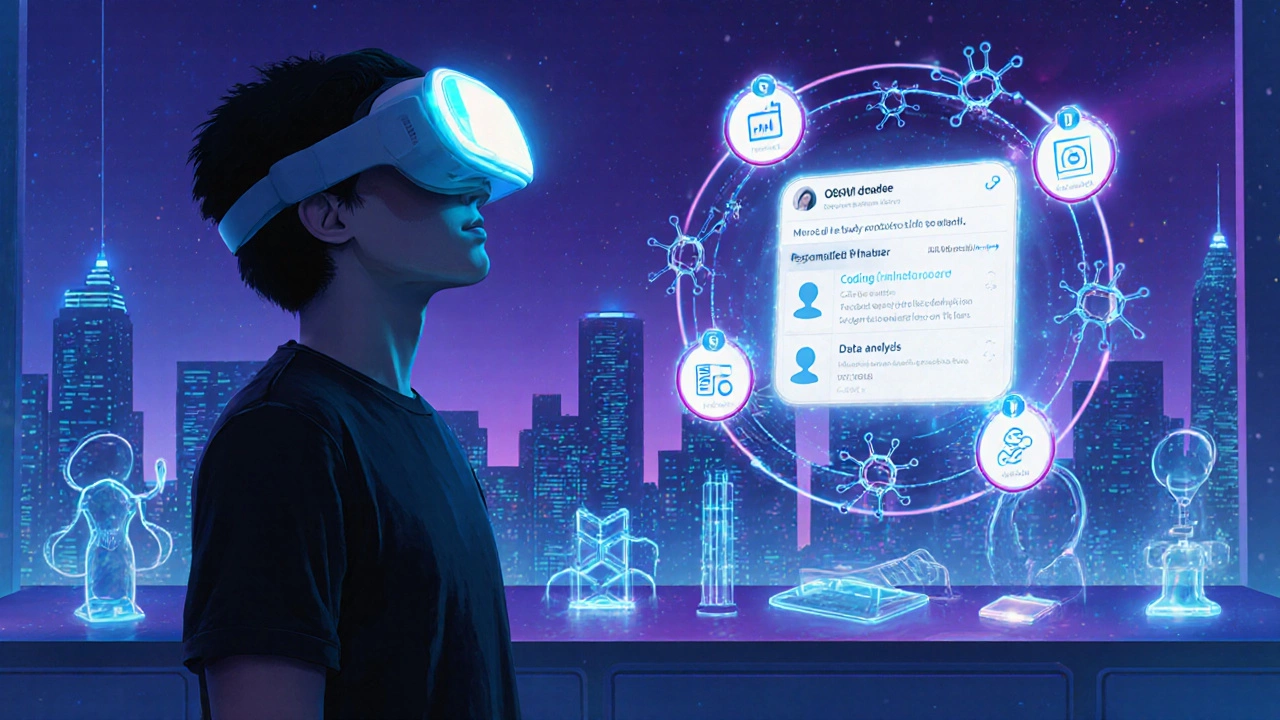Distance Learning Delivery Method Comparison
Synchronous Learning
Real-time interaction between learners and instructors
- Live video conferencing
- Instant feedback
- Group collaboration
Asynchronous Learning
Self-paced learning without real-time interaction
- Pre-recorded videos
- Discussion forums
- Flexible scheduling
Compare Learning Methods
Select options below to see how synchronous and asynchronous learning differ:
Recommended Learning Approach
Enter your preferences above to see which learning method may work best for you.
Synchronous vs Asynchronous Learning Comparison Table
| Aspect | Synchronous | Asynchronous |
|---|---|---|
| Timing | Live, scheduled sessions | Self-paced, on-demand |
| Interaction | Real-time chat, video, polls | Forum posts, email, recorded Q&A |
| Flexibility | Less flexible, requires presence | High flexibility, fits any schedule |
| Technology | Live streaming platforms, virtual classroom | Content hosting, LMS |
| Best for | Skill-based workshops, language practice | Theory courses, large enrollment programs |
Key Takeaways
- Distance learning relies on a blend of technology, content, and structured interaction.
- Synchronous and asynchronous formats each serve different learner needs.
- A Learning Management System (LMS) is the hub that ties everything together.
- Assessment and accreditation can be fully online but require clear policies.
- Success depends on reliable internet, good course design, and active participation.
What is distance learning?
When you hear the term distance learning is a mode of education where teachers and students are separated by physical space and connect through digital tools, think of it as any education that happens outside a traditional classroom. It can be a university lecture streamed live, a self‑paced module on a website, or a hybrid mix of both. The goal is the same as face‑to‑face teaching: deliver knowledge, develop skills, and certify achievement-only the delivery channel changes.
Core Components that Make It Tick
Four pillars keep distance learning running smoothly.
- Internet connectivity: Without a stable connection, video streams drop, discussion boards lag, and assignments can’t be submitted.
- Digital content: Slides, videos, readings, simulations, and interactive quizzes replace printed handouts.
- Learning Management System (LMS): This is the software platform where everything lives. It tracks enrollments, hosts content, grades work, and sends notifications.
- Human interaction: Instructors, peers, and support staff provide guidance, feedback, and community.
Each piece must be chosen carefully. For instance, an LMS like Moodle or Canvas (both Learning Management System software that organizes, delivers, and tracks online courses) offers built‑in discussion forums, gradebooks, and plagiarism checks, reducing the need for separate tools.
Synchronous vs. Asynchronous Learning
Two delivery styles dominate the distance‑learning world.
| Aspect | Synchronous | Asynchronous |
|---|---|---|
| Timing | Live, scheduled sessions | Self‑paced, on‑demand |
| Interaction | Real‑time chat, video, polls | Forum posts, email, recorded Q&A |
| Flexibility | Less flexible, requires presence | High flexibility, fits any schedule |
| Technology | Live streaming platforms, virtual classroom | Content hosting, LMS |
| Best for | Skill‑based workshops, language practice | Theory courses, large enrollment programs |
Many programs blend both. A student might watch recorded lectures (asynchronous) and then join a weekly Zoom call (synchronous) to discuss case studies.
How Courses Are Delivered
Think of a typical week in a distance‑learning course:
- Video lecture: A 20‑minute pre‑recorded segment uploaded to the LMS.
- Reading assignment: A PDF or linked article that deepens the topic.
- Discussion board: Learners post reflections; peers comment. This activity often carries a participation grade.
- Quiz or assignment: Auto‑graded multiple‑choice or a short essay submitted through the LMS.
- Live session (optional): An instructor hosts a virtual classroom for Q&A, using screen sharing and breakout rooms.
The LMS keeps track of completion rates, so instructors instantly see who’s falling behind and can intervene.
Roles of Educators and Learners
In a virtual setting, the teacher becomes more of a facilitator. They curate content, set clear expectations, and design engaging activities. A good educator also monitors analytics-like time‑on‑page and quiz scores-to spot struggling students.
Students, on the other hand, must practice self‑discipline. They schedule study blocks, actively participate in discussions, and seek help early. The responsibility shift can feel daunting, but the payoff is greater autonomy.

Assessment, Feedback, and Accreditation
Online assessments come in many flavors.
- Formative quizzes: Low‑stakes checks that give instant feedback.
- Summative exams: Timed tests, sometimes proctored via webcam or specialized software.
- Project‑based work: Portfolios, presentations, or code repositories evaluated by rubrics.
When an institution claims that a course is accredited officially recognized by a governing educational body, it means the curriculum meets external quality standards. Many accreditation agencies now accept fully online programs, provided they can verify identity and academic integrity.
Common Challenges and Best‑Practice Tips
Even with a solid platform, hurdles appear.
- Technical glitches: Encourage students to test audio/video before live sessions.
- Low engagement: Use quick polls, breakout rooms, and gamified quizzes to keep energy up.
- Isolation: Schedule regular virtual office hours and peer‑review activities.
- Accessibility: Provide transcripts, captions, and screen‑reader friendly documents.
Implementing these practices reduces dropout rates and improves learning outcomes.
Future Trends Shaping Distance Learning
Artificial intelligence is already personalizing study pathways-think chatbots that suggest resources based on quiz performance. Virtual reality labs let science students conduct experiments safely from home. Meanwhile, micro‑credentialing platforms let learners earn bite‑size badges that stack toward full degrees.
These innovations will make remote education more immersive, adaptive, and recognized across industries.
Frequently Asked Questions
Is distance learning as credible as classroom learning?
Accredited institutions now award the same diplomas for online programs as they do for on‑campus tracks. Employers increasingly recognize the rigor of reputable online degrees, especially when they include proctored assessments and industry‑aligned curricula.
Do I need special software to join a virtual classroom?
Most platforms work in a web browser, so a modern browser and a webcam/microphone are enough. Some schools use dedicated apps for breakout rooms or polling, but they’re usually free to download.
How are grades calculated in an online course?
Grades typically combine automated quiz scores, instructor‑graded assignments, and participation metrics from discussion boards. The LMS provides a gradebook that updates in real time, so students can see where they stand throughout the term.
What if I have unreliable internet at home?
Many schools offer downloadable video files or low‑bandwidth audio versions. You can also access campus computer labs or public libraries for a stable connection, and most instructors will record live sessions for later viewing.
Can I earn a degree entirely online?
Yes. Hundreds of universities in the U.S., Europe, and Asia now offer fully online bachelor's, master's, and even doctoral programs. Check the school’s accreditation status to be sure the credential carries weight.
